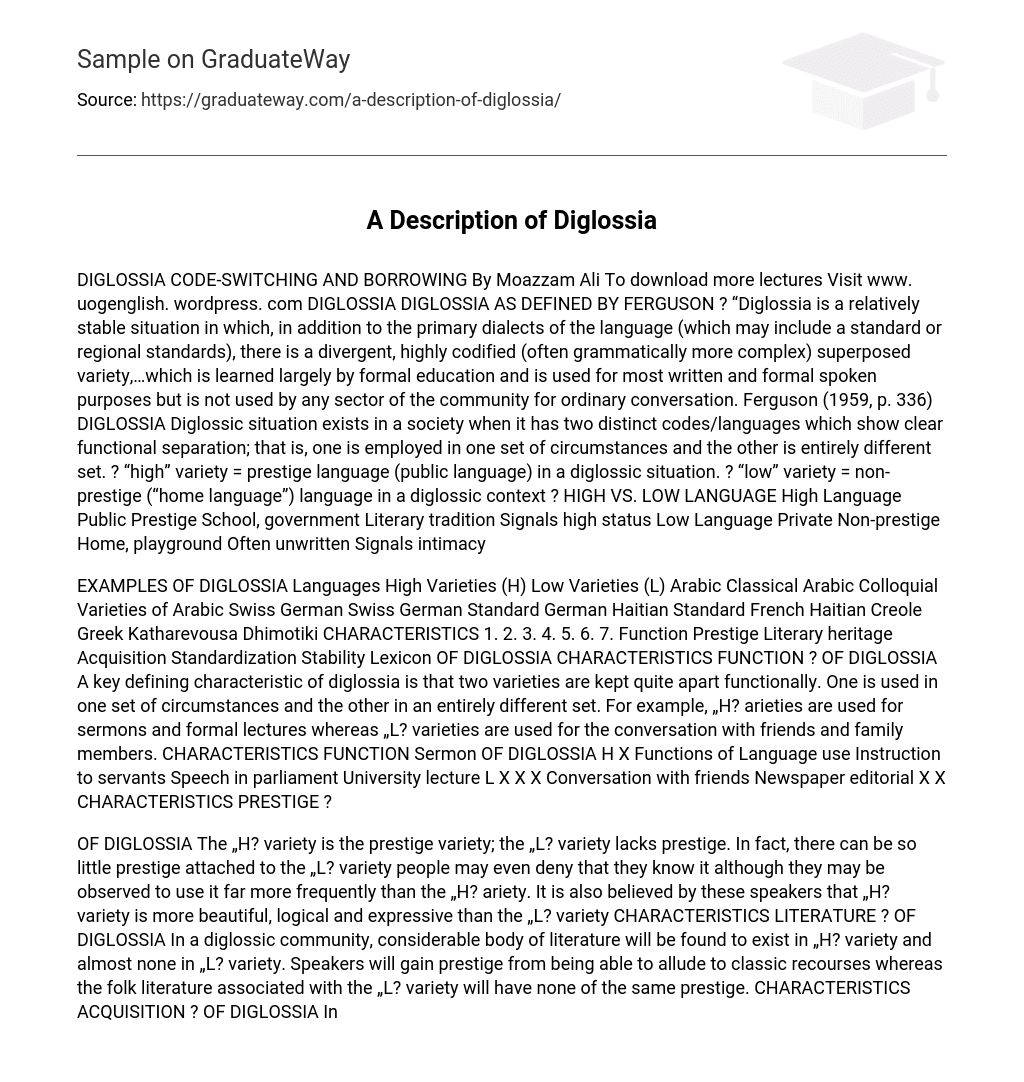D “Diglossia is a relatively stable situation in which, in addition to the primary dialects of the language (which may include a standard or regional standards), there is a divergent, highly codified (often grammatically more complex) superposed variety,…which is learned largely by formal education and is used for most written and formal spoken purposes but is not used by any sector of the community for ordinary conversation. Ferguson (1959, p. 336)
Diglossic situation exists in a society when it has two distinct codes/languages which show clear functional separation; that is, one is employed in one set of circumstances and the other is entirely different set.
- “high” variety = prestige language (public language) in a diglossic situation.
- “low” variety = non-prestige (“home language”) language in a diglossic context
The effect of bilingualism on the languages structures in a community is manifested in the form of the following processes:
- Code switching
- Code mixing
- Borrowing
The process in which the bilingual speakers shift back and forth between one language or a dialect and another language or dialect within the same conversation. (Trudgill, 2003) Milroy and Muysken (1995), for example, define CS as “the alternative use by bilinguals of two or more languages in the same conversation” (p. 7). They use code-switching as a cover term under which different forms of bilingual behavior are subsumed. Myers-Scotton (1993b) also uses code-switching as a cover term and defines it as “alternations of linguistic varieties within the same conversation”
The process in which the speakers shift back and forth between two languages with such rapidity and density, even within the sentences and phrases that it is not possible to say at any time which language they are speaking. The process by which bilingual/multilingual speakers introduce words from one language into another language, and these words eventually become accepted as an integral part of the second language. e. g. „restaurant is a French word and now it has become an integral part of English language.
When bilingual speakers converse, they frequently integrate linguistic material from both of their languages within the same discourse segment. Code-switching involves speaking one language, then another, usually across sentences or clauses. Intrasentential codeswitching refers to changing languages in the middle of a sentence. Borrowing – borrowing involves adapting words to fit the language you are speaking, including sounds and grammar, making the borrowed word part of your language.





